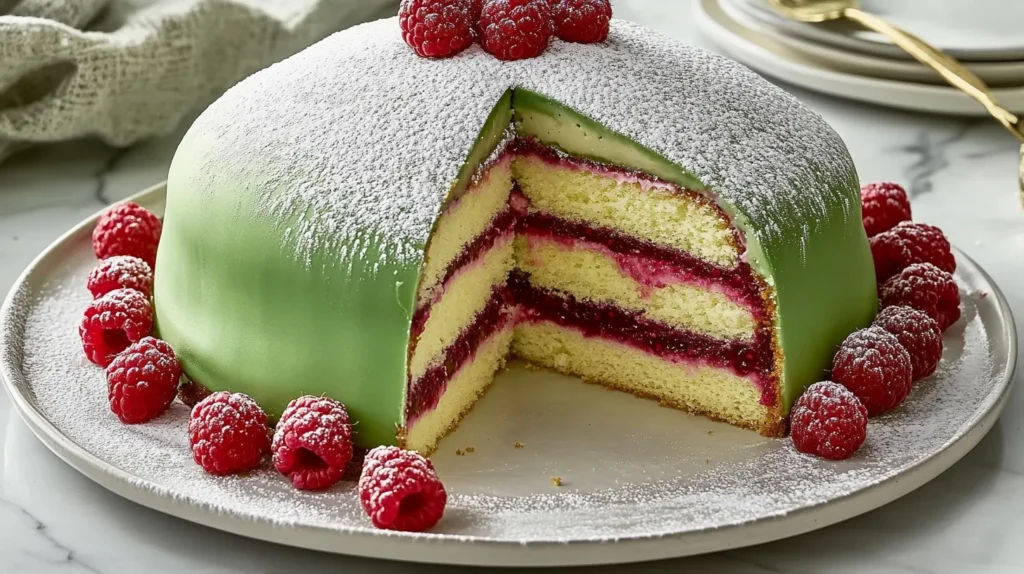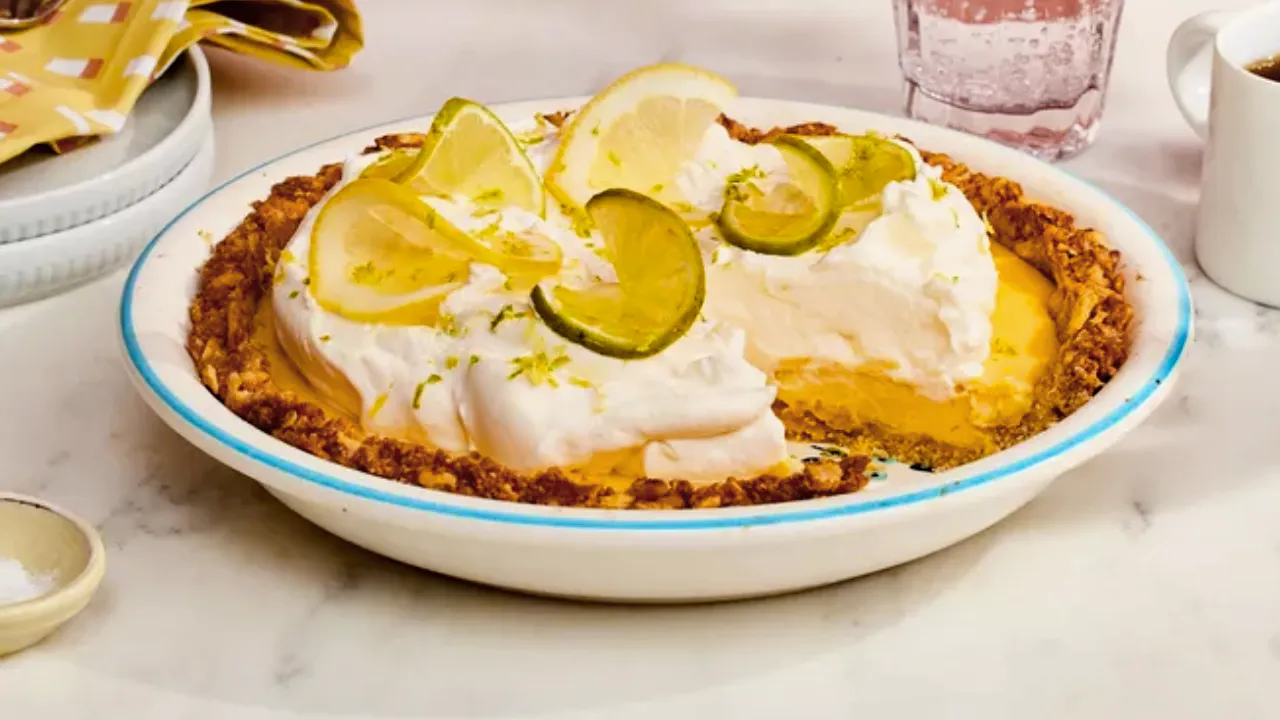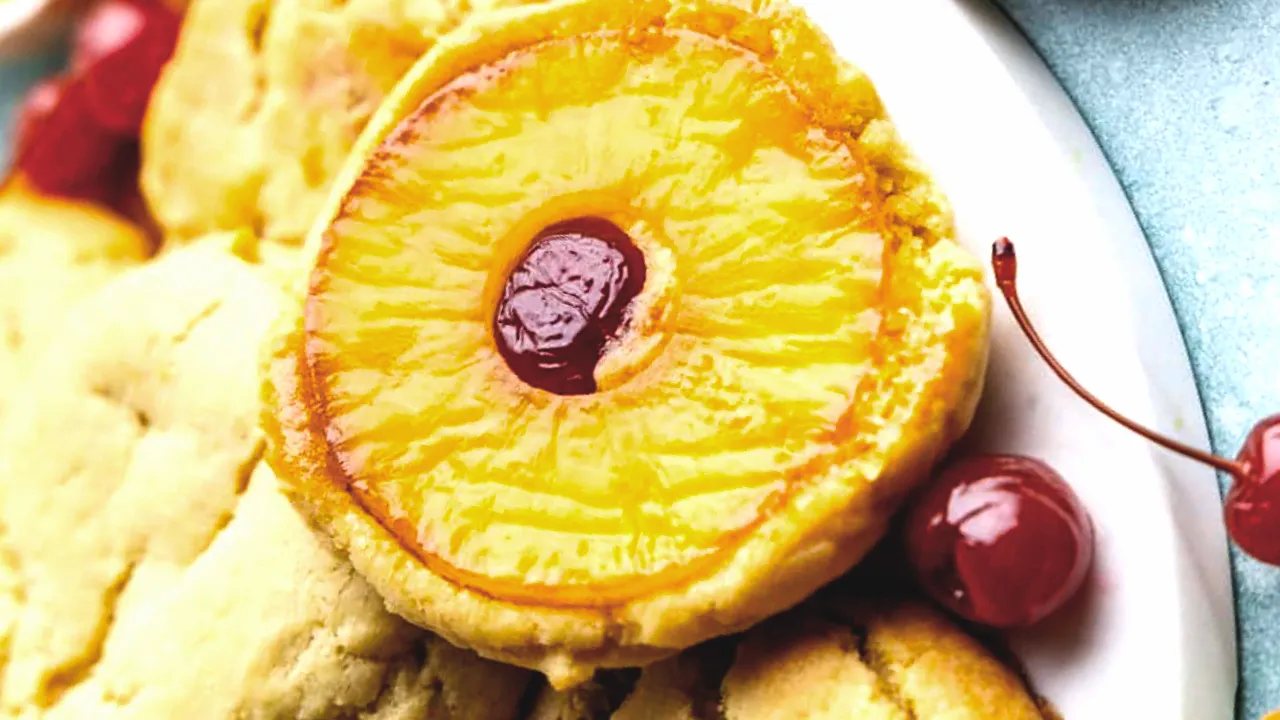Do traditional baked goods still hold a special place in today’s celebrations? Many cherish the rich history and joy they bring to family gatherings. A classic example is the vintage Swedish cake, loved by many for generations.
This vintage cake recipe showcases Sweden’s deep baking traditions. Cakes like Princess Cake (Prinsesstårta) are favorites among many. Baking this cake is more than following a recipe. It’s about creating a connection to our past and to each other.
Key Takeaways
- Discover the rich history behind traditional Swedish cakes.
- Learn the significance of vintage cake recipes in modern times.
- Explore the joy of baking a traditional Swedish treat.
- Understand the cultural importance of cakes like Princess Cake.
- Find out how to create a memorable baking experience.
The Rich Heritage of Swedish Cake Making
Swedish baking is known for its simplicity and elegance. Cakes like the Princess Cake are symbols of Swedish cuisine. The art of cake making in Sweden is a mix of centuries of culture and cooking.
Origins of Traditional Swedish Cakes
Traditional Swedish cakes started in the early 20th century. Bakers then began trying new ingredients and methods. The Princess Cake, made in the 1920s by Jenny Åkerström, is a key example.
| Year | Event | Impact on Swedish Baking |
|---|---|---|
| 1920s | Creation of Princess Cake | Introduced a new era in Swedish cake making with layered cakes. |
| 1950s | Post-war ingredient availability | Led to the incorporation of new ingredients in traditional recipes. |
| Present Day | Global influences on Swedish baking | Continues to evolve with modern twists on classic recipes. |
How Swedish Cake Recipes Evolved Over Generations
Swedish cake recipes have changed a lot over time. They’ve been shaped by cultural exchange and new cooking ideas. The retro Swedish cake, for example, has been updated while keeping its traditional charm.
Today, Swedish cakes are still loved in the country. They’re a big part of celebrations and family gatherings.
The Vintage Swedish Cake Recipe: History and Overview
This Vintage Swedish Cake Recipe is filled with history and tradition. It gives us a peek into Sweden’s rich baking past. Sweden loves baking, and it has many traditional cakes passed down through generations.
The art of traditional Swedish baking focuses on simplicity. It uses local ingredients like cardamom, almonds, and fresh berries. The Vintage Swedish Cake Recipe shows the warmth and coziness of Swedish culture.
What Makes This Cake Uniquely Swedish
Several things make this cake special. First, it uses cardamom, a spice common in Swedish baking. This gives the cake a unique flavor. The cake’s dense and moist texture comes from traditional ingredients like almond paste and butter.
- The incorporation of local ingredients
- The use of cardamom for a unique flavor
- A dense and moist texture achieved through traditional methods
Regional Variations Across Sweden
The Vintage Swedish Cake Recipe is loved all over Sweden. But, there are regional variations that show local tastes and what’s available. Some areas might use different nuts or spices, while others might add local fruits or berries.
These variations show the diversity of Swedish baking. They also show how traditional recipes can be adapted. Whether you’re baking for a special event or just to enjoy, knowing these regional differences can make your baking more interesting.
Essential Ingredients for Authentic Swedish Cake
The key to a real Swedish cake is in its ingredients. These are often simple but uniquely Scandinavian. Choosing the right ingredients is vital for a historic Scandinavian dessert like the traditional Swedish cake.
Swedish cakes are known for their simplicity. They use local ingredients. The traditional recipe combines basic pantry items with unique Scandinavian elements.
Traditional Swedish Ingredients
Traditional Swedish cakes include cardamom for its unique flavor. They also have flour, sugar, eggs, and butter. Some recipes add almond extract and saffron, mainly for holidays.
Cardamom is a key spice in many Scandinavian baked goods, including this old-fashioned cake recipe. It adds depth and warmth.
Modern Substitutions for Hard-to-Find Items
Modern bakers might find it hard to get some traditional ingredients. For example, cardamom can be replaced with cinnamon and nutmeg. But the flavor will be a bit different.
| Traditional Ingredient | Modern Substitution |
|---|---|
| Cardamom | Cinnamon + Nutmeg |
| Saffron | Turmeric (for color) |
| Almond extract | Vanilla extract (in a pinch) |
Knowing the traditional ingredients and how to substitute them helps bakers make an authentic Swedish cake. This cake honors the historic Scandinavian dessert tradition while being accessible today.
When baking an old-fashioned cake recipe, balance tradition with practicality. This ensures the cake is delicious and stays true to its heritage.
Kitchen Tools and Equipment You’ll Need
To make a traditional Swedish cake just right, you need the right tools. Your kitchen should be ready with everything needed for the recipe.
Essential Baking Tools
Here are the tools you must have for a Swedish cake:
- Mixing bowls
- Measuring cups and spoons
- Electric mixer
- Baking pans
| Tool | Purpose |
|---|---|
| Mixing bowls | For combining wet and dry ingredients |
| Measuring cups and spoons | For accurate measurement of ingredients |
| Electric mixer | For creaming butter and sugar, and beating eggs |
Optional Equipment for Perfect Results
While not essential, these tools can improve your results:
- Digital scale
- Baking scale
Preparation Before Baking
Getting ready for traditional Swedish baking is key. Make sure your ingredients are measured right and your kitchen is set up. This will greatly affect your classic cake’s success.
Measuring and Preparing Ingredients
First, collect all the ingredients for your vintage Swedish cake. Use a digital scale for precise measurements. This is important for ingredients like flour, sugar, and yeast.
These ingredients need to be measured carefully. This ensures the right chemical reactions happen while baking. Traditional Swedish baking often uses special ingredients. You might need to visit a specialty store or find substitutes.
Creating the Ideal Baking Environment
Setting up the perfect baking space is more than just heating the oven. Keep your kitchen at a comfortable temperature. Also, make sure your baking pans are ready as the recipe says.
For a classic cake, preheat the oven to the correct temperature. Place the rack for even baking. Paying close attention to these details helps your cake bake perfectly. It prevents overcooking or undercooking.
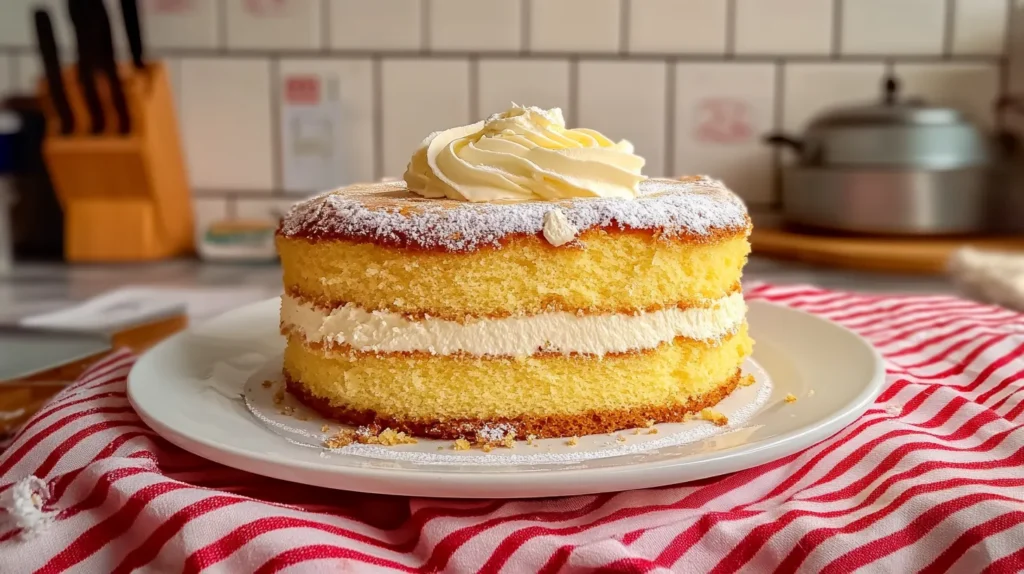
Step-by-Step Baking Instructions
To make this historic Scandinavian dessert, follow these steps carefully. Baking a Vintage Swedish Cake is a detailed process. But the result is worth all the effort.
1. Mixing the Dry Ingredients
Start by mixing the dry ingredients. This includes flour, sugar, and other dry parts of the recipe. It’s key to sift these together. This makes sure they’re well mixed and light.
- Sift 2 cups of all-purpose flour into a large mixing bowl.
- Add 1 cup of granulated sugar and a pinch of salt.
- Mix these dry ingredients until they’re evenly distributed.
2. Preparing the Wet Ingredients
Next, prepare the wet ingredients. This includes eggs, butter or other fats, and flavorings like vanilla. Make sure the butter is soft and the eggs are room temperature for easier mixing.
- Crack 3 large eggs into the bowl and whisk them lightly.
- Add 1/2 cup of softened butter and mix until the eggs and butter are fully incorporated.
- Stir in 1 teaspoon of vanilla extract for added flavor.
3. Combining and Creating the Batter
Now, mix the dry and wet ingredients together. Add the dry ingredients to the wet ingredients slowly. Mix until you get a smooth batter. Don’t overmix to avoid a dense cake.
The batter should be free of lumps and smooth. If needed, adjust the batter’s consistency with a bit of liquid or dry ingredients.
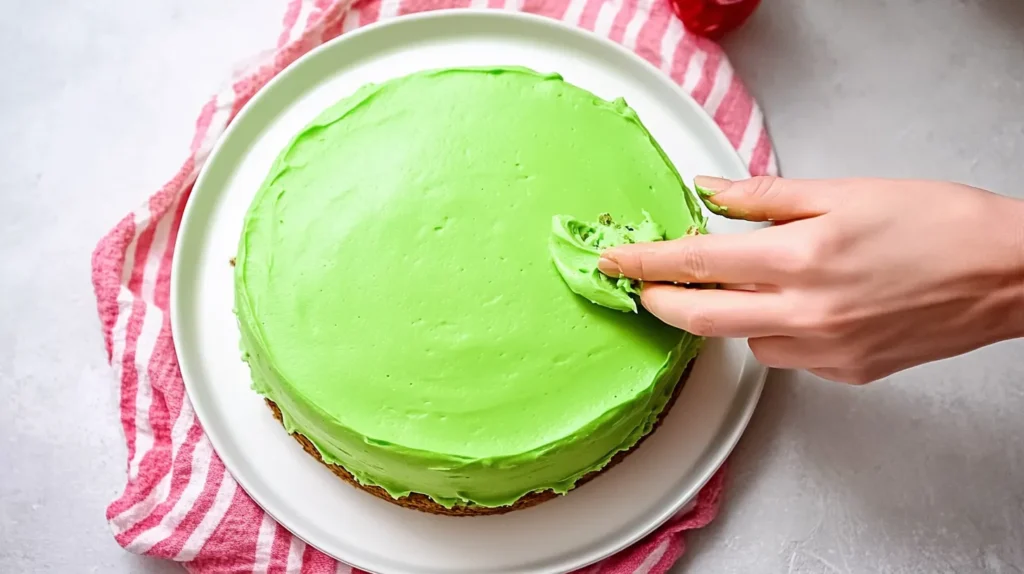
4. Proper Pan Preparation
Before putting the batter in the pan, prepare it well. Grease the pan with butter and dust it with flour to prevent sticking.
- Apply a thin layer of butter to the pan using a pastry brush.
- Sprinkle a small amount of flour into the pan and tap out any excess.
5. Baking Times and Temperatures
Lastly, bake the cake in a preheated oven at the right temperature. The baking time will vary based on the cake’s size and the oven’s temperature.
For a standard-sized cake, bake at 350°F (175°C) for about 30-40 minutes. It’s done when a toothpick inserted into the center comes out clean.
Creating the Traditional Swedish Frosting
To complete the authentic Swedish cake experience, a traditional Swedish frosting is a must. The frosting adds sweetness and improves the cake’s texture and look.
Frosting Ingredients and Preparation
The classic Swedish frosting recipe is simple yet precise. It includes butter, powdered sugar, and a hint of vanilla. The quality of these ingredients is key for the right taste and consistency.
| Ingredient | Quantity | Purpose |
|---|---|---|
| Unsalted Butter | 1 cup | Provides richness and creaminess |
| Powdered Sugar | 2 cups | Adds sweetness and structure |
| Vanilla Extract | 1 teaspoon | Enhances flavor |
Decorative Techniques
Once the frosting is ready, decorating starts. Traditional Swedish cakes have intricate designs that show Swedish heritage. You can smooth the frosting for a clean look or make patterns with a fork.
For a more detailed design, bakers can use marzipan. It’s a common Swedish baking ingredient for decorative borders or shapes. Be gentle and precise to keep the cake’s elegant look.
Expert Tips for a Perfect Swedish Cake
Getting a perfect Swedish cake is easier than you think. Just know the common mistakes to avoid and how to fix them. Baking a traditional Swedish cake needs focus on details. But with the right tips, you can make a cake that tastes great and looks amazing.
Common Mistakes to Avoid
When baking a vintage cake, some mistakes can ruin the result. One big error is using the wrong amounts of ingredients. Always measure ingredients precisely for the best taste and texture. Another mistake is not getting the oven ready right, like not preheating it enough.
Here’s a quick guide to common mistakes and how to fix them:
| Mistake | Solution |
|---|---|
| Incorrect ingredient ratios | Measure ingredients precisely |
| Improper mixing techniques | Use gentle folding for wet and dry ingredients |
| Insufficient oven preheating | Preheat oven to the correct temperature |
Troubleshooting Baking Issues
Baking problems can still happen, even with careful planning. If your cake isn’t baked evenly, check your oven’s temperature. Also, try rotating the cake pan while it’s baking. For frosting problems, like it being too runny or stiff, adjust it by adding powdered sugar or cream.
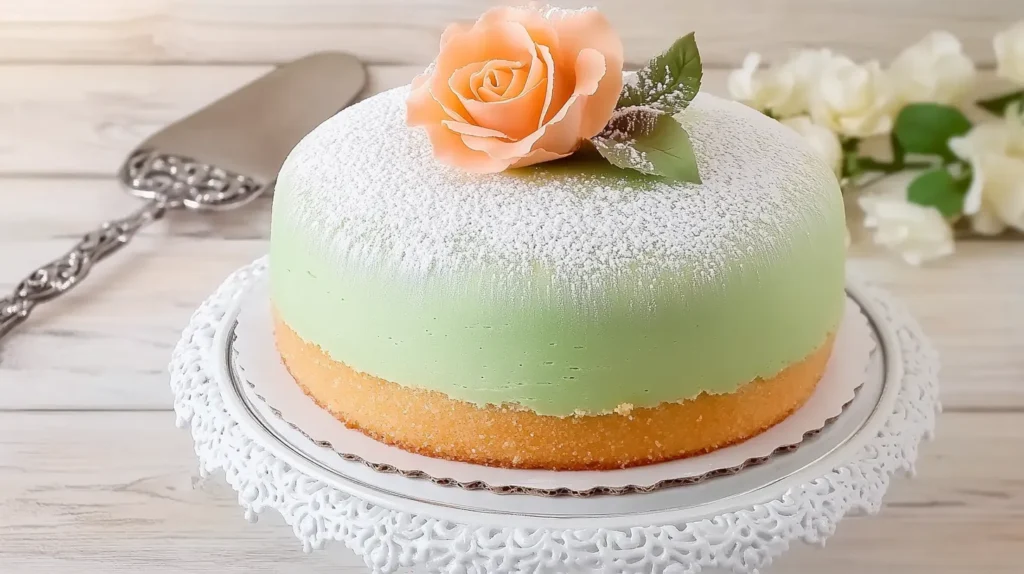
Knowing how to solve common baking problems can improve your Swedish baking skills. This way, you can make a cake that’s not only delicious but also looks great.
Serving Your Vintage Swedish Cake
Serving a Vintage Swedish Cake is an art that blends tradition with personal touch. This cake, with its rich history, deserves to be presented with honor and personal flair.
Traditional Accompaniments
Swedish cakes are traditionally served with flavors that complement them. For the Vintage Swedish Cake, pair it with coffee or tea, as Swedes do. Fresh berries or whipped cream can also boost the cake’s taste and look. These simple accompaniments let the cake’s unique flavors stand out.
Presentation Tips for Special Occasions
For special occasions, the presentation of the Vintage Swedish Cake is crucial. Dust the cake with powdered sugar or decorate it with edible flowers for a festive look. For a formal event, slice the cake and serve it on decorative plates. The cake’s historic charm makes it a perfect centerpiece for any celebration.
| Occasion | Traditional Serving Suggestion | Modern Twist |
|---|---|---|
| Wedding | Coffee and cake served together | Decorative cake stand with flowers |
| Birthday | Cake with candles and whipped cream | Personalized cake topper |
| Holiday | Serve with traditional holiday treats | Themed decorations around the cake |
Cultural Significance and Traditions
In Sweden, cake is a big deal in many celebrations and traditions. It’s a key part of gatherings and festivities. It stands for warmth, hospitality, and community.
The Role of Cake in Swedish Celebrations
Swedish cake is a highlight in many celebrations, like birthdays and weddings. The traditional Swedish cake brings people together. Baking and sharing cake shows love and care in Sweden.
Cake has a big role in Swedish culture. Families come together to bake and decorate cakes on special occasions. This creates lasting memories.
Seasonal Variations and Holiday Adaptations
Swedish cake recipes change with the seasons and holidays. For Christmas, cakes are made with spices like cinnamon and cardamom. In summer, cakes with fresh berries are favored.
These changes show how Swedish cake can fit any time of year. Whether it’s a hearty winter cake or a light summer treat, it’s always loved.
Conclusion
Baking the vintage Swedish cake recipe is a fun journey into Sweden’s rich food history. It combines traditional ingredients with old-fashioned methods. This makes the cake a hit with anyone who tastes it.
Following the steps in this article, bakers of all levels can make a real Swedish cake. It’s great for special events or just for fun. The vintage Swedish cake recipe brings a taste of Swedish warmth and welcome.
If you want to try something new or learn about Swedish baking, this cake is perfect. So, why not try the vintage Swedish cake recipe? It’s a great way to enjoy baking and taste a piece of Swedish heritage.

